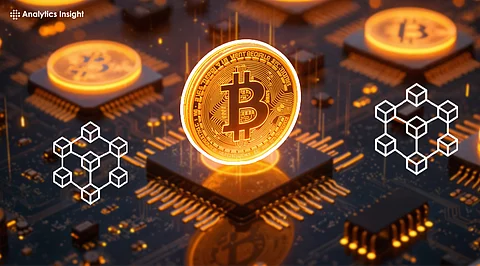

Blockchain is evolving beyond cryptocurrency into industries like healthcare, finance, and logistics.
The future includes smarter contracts, decentralized apps, and eco-friendly blockchain solutions.
Widespread adoption of blockchain depends on scalability, regulation, and interoperability.
Blockchain tech has already changed things for digital trades. It's used for digital money and clear systems, and each year it's used more. As it grows, it can do more than just handle digital coins.
Now, it's moving into health, money matters, supply routes, and ruling systems. The way blockchain will be used looks good, but some problems and needed upgrades will mold how it goes.
Blockchain began with Bitcoin, but now it does lots more. Now, blockchain systems back many things, like money handling that's not controlled by one place (DeFi), games, and checking who people are. Blockchain tech is being examined by groups for managing supply chains, fighting fraud, and securing data.
Smart contracts allow for automated and reliable deals, cutting back on the need for middlemen. These contracts make sure rules are followed before anything is done, like sending payment only when a product is delivered. Early blockchain systems had issues with speed and cost.
Now, networks are working to fix these problems. Scaling up is a main aim. Blockchains such as Solana and Avalanche were developed to handle a higher number of trades per second at a lower cost. Plus, Layer 2 solutions like Optimism and Arbitrum help existing blockchains like Ethereum perform better. These updates make blockchain more helpful for daily uses, from payments to fast-working apps.
Old blockchains were blamed for using too much power, mostly those using proof-of-work methods like Bitcoin. This worry is getting fixed. Ethereum, for one, switched to a proof-of-stake way, cutting power use by over 99%.
Newer blockchain setups are created to keep the Earth in mind. Green blockchain tech will be key for it to be used later, mostly as businesses and governments push to cut carbon emissions.
Both the government and business areas are trying out blockchain to grow trust and clarity. Governments are seeing blockchain as useful for digital ID systems, voting systems, and public records.
Businesses are testing private blockchains to keep data safe and run agreements on their own. These growths might not be as fast as in the crypto world, but what's being set up now could cause changes in how groups work for a long time.
Also Read: From UPI to Global Leadership: How India Became a Powerhouse in the Payments Ecosystem
The idea of Web3, an internet run by users, is being built on blockchain. This view has apps not run by one place (dApps), social sites, and markets where users fully control their data.
DeFi sites let users lend, take, and trade items without traditional banks. These tools are still growing and sometimes face hacks or rule issues. Still, they show a move from main control to systems run by users.
Rules will be a key part of how blockchain is used later. Governments all over are still forming their plans on digital money and blockchain-based services. Some countries have let in new ideas with clear guiding lines, while others stay cautious. Clear rules will help keep users safe and bring trust to the setup. A good mix between new ideas and rules will mold how much blockchain is used.
Many blockchains work on their own now. This makes it hard for apps or users to move data and items between networks. Interoperability plans want to fix this. Sites like Polkadot, Cosmos, and Chainlink are working on ways to link different blockchains. These links could cause a more joined setup, letting users enjoy services across networks without changing sites.
Blockchain is known to be safe, but that doesn’t mean there are no risks. Smart agreement errors, phishing attacks, and fake plans can still cause harm. The future will likely bring better tools for users to spot risks and keep their items safe. Security checks, insurance choices, and better wallets can help grow belief and stop big losses.
Also Read: DOGE's Next Trick: Buying Bitcoin Mining Contracts!
Blockchain is still new. What began as a base for digital money has turned into a place for change across many fields. With better speed, power use, and tools, blockchain can make digital systems more open, fair, and safe.
Its future will depend on fixing current problems while keeping its promise of not being run by one place and being clear. As the world gets more digital, blockchain will be more important, not just in money, but in forming how digital services are built and trusted.
“As industries continue to embrace decentralized technologies, the rise of blockchain is shaping the future of finance, healthcare, and beyond."
1. What are some non-crypto uses of blockchain?
Blockchain is being used in healthcare, supply chain, identity management, and digital voting.
2. How is blockchain becoming more eco-friendly?
New systems like proof-of-stake and green protocols reduce blockchain energy consumption.
3. Why is scalability important for blockchain growth?
Scalability allows blockchain to handle more transactions, making it suitable for mainstream use.
4. How are governments using blockchain technology?
Governments are adopting blockchain for secure record-keeping, digital identities, and elections.
5. What is interoperability in blockchain?
Interoperability allows different blockchains to connect and share data or assets seamlessly.
